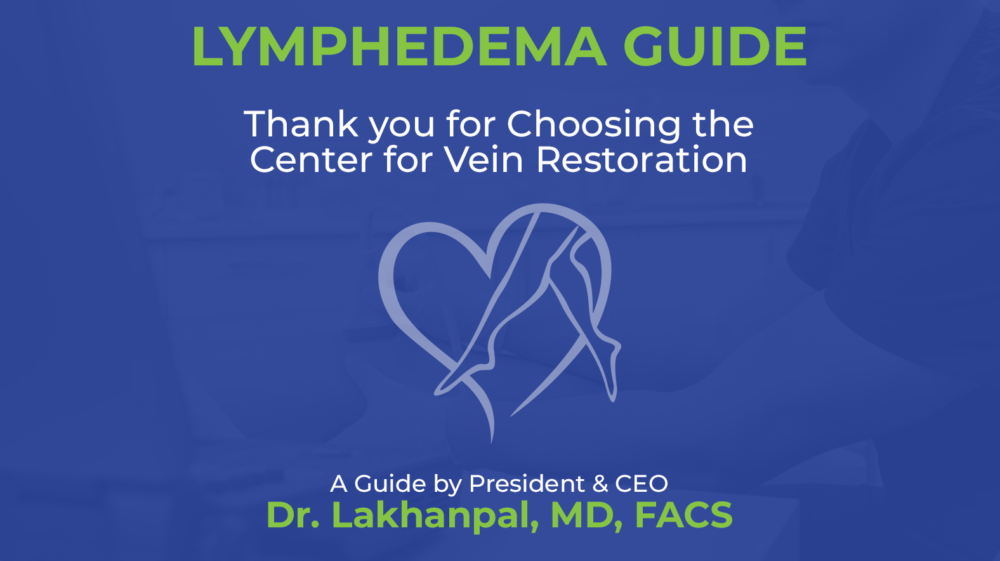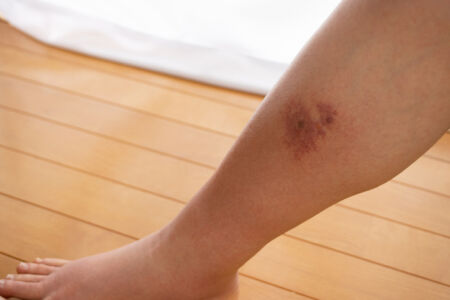
LYMPHEDEMA GUIDE: Thank you for choosing Center for Vein Restoration
Improving lives in the communities we serve by providing state-of-the-art vascular and lymphatic care in a compassionate and affordable manner.

Lymphedema is a painful condition that causes swelling in the legs. It can also lead to a serious skin infection if not treated.
A defining characteristic of varicose veins is a pronounced swelling in the legs and feet. But there is another condition that also causes severe edema in the limbs — lymphedema. If you have varicose veins, you should be aware of the heightened risk of lymphedema and a serious bacterial skin infection known as cellulitis. Lymphedema dramatically increases one's chances of developing cellulitis. Similarly, cellulitis raises the risk for lymphedema. This article will explore the link between the two and what you can do to prevent them from occurring.
Lymphedema occurs when the lymph nodes containing the white blood cells that attack bacteria and other infectious agents fail to drain the lymph fluid. As the fluid builds up, legs, feet, and other limbs harden and swell.
Lymphedema has two classifications: primary or secondary. In primary lymphedema, a congenital disorder leads to excessive swelling. Secondary lymphedema can be caused by cancer surgery during which lymph nodes are removed, bacterial infections, deep vein thrombosis, or chronic venous insufficiency. In addition to the swelling, lymphedema puts one at greater risk for cellulitis.
Cellulitis is a bacterial infection, typically streptococcus or staphylococcus, that grows within the top layer of the skin. Although it can occur anywhere on the body, it’s most common on the lower extremities. A cut in the skin provides entry to the bacteria. It can also develop if your immune system is weakened or you have lymphedema.
Lymphedema thins skin due to the stretching from the accumulated fluid, making it easier for bacteria to enter. Bacteria flourish in the swollen tissue caused by lymphedema.
Cellulitis symptoms include red, tender, swollen areas on the skin that are tender to the touch. Fever often accompanies cellulitis and can cause blisters on the skin. Untreated cellulitis can spread to the bloodstream and bones and possibly lead to gangrene. As such, any sign of infection should be evaluated by a doctor as soon as possible.
Although lymphedema doesn’t always result in cellulitis, having either condition can worsen the other. For instance, a severe bout of cellulitis can damage the lymphatic system, resulting in secondary lymphedema. Similarly, lymphedema can raise the risk of developing cellulitis because it hinders one's ability to fight off infection.
The first line of treatment for cellulitis is a regiment of oral antibiotics. If the infection fails to respond to the oral antibiotics, the sufferer may require intravenous antibiotics and a hospital stay.
However, medical intervention may not be needed if preventative tips are followed. If you have lymphedema, check your skin regularly for any cuts or bruises that could lead to an infection. Keep your skin clean and apply ointments that can protect against infection. Any break in the skin must be bandaged and covered with new bandages daily. If the skin becomes infected, see your doctor for treatment. If you’re running a high fever along with the infection, go to the ER immediately.
Although there is no cure for lymphedema, patients can relieve the pain and swelling with compression therapy that encourages lymphatic drainage. As the lymphatic fluid drains, the chance of developing an infection decreases. Treating lymphedema further lowers the risk of cellulitis.
The treatments in this category are compression stockings, layers of bandages to tamp down the swelling, manual lymphatic drainage massage, and pneumatic compression. A physical therapist can work with you on at-home treatments and exercises for lymphedema.
In recent years, several surgical procedures have treated lymphedema successfully. Diuretics are not recommended for lymphedema symptoms.
Center for Vein Restoration physicians address many circulatory disorders, including varicose veins and lymphedema. Treating your varicose veins and lymphedema will greatly improve your quality of life. Contact us today to learn more about therapies for lymphedema, cellulitis, and varicose veins.